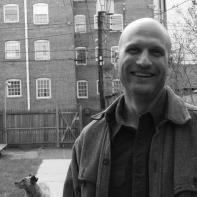Follow the music into sense.
Norman Dubie
 I have been thinking about the ways in which musical and verbal intelligences merge in a poem as compositional strategy, because I have wanted to understand how a poet “thinks” through the music of the poem, as distinct from stating a thought directly as an abstraction or translating it visually into imagery. What interests me is the way a poet puts sonorous “truths” in play. These “truths” are not always articulated thematically in the poem, but the poem’s music gives rise to them, in the musical supplement to signification that Northrup Frye called the “babble” of poetry.[1] The choric aspect of poetry supplements and complements poetic signification, in meaningful (if indeterminate) ways, with what I’ll call sound-thinking.
I have been thinking about the ways in which musical and verbal intelligences merge in a poem as compositional strategy, because I have wanted to understand how a poet “thinks” through the music of the poem, as distinct from stating a thought directly as an abstraction or translating it visually into imagery. What interests me is the way a poet puts sonorous “truths” in play. These “truths” are not always articulated thematically in the poem, but the poem’s music gives rise to them, in the musical supplement to signification that Northrup Frye called the “babble” of poetry.[1] The choric aspect of poetry supplements and complements poetic signification, in meaningful (if indeterminate) ways, with what I’ll call sound-thinking.
Music functions as an intellectual, even visionary element of poetry, putting into play something akin to a counter-intuitive logic.[2] A poet sees through words and thinks in song. To give a brief example, consider Tess Gallagher’s elegiac poem, “Comeback,” in which we find resonant moments of words chosen for the aural effect, with semantic intonations rippling afterward like the wake of a boat.[3] What the reader is told is that—as the speaker remembers how her father “loved first light,” and would sit, exactly as the speaker of the poem is sitting in early morning with her cup of coffee looking out over the “Strait”— the speaker may be dying, like her father and her husband, of cancer. But any “certainty” in the poem comes not from direct statements, but in the music of the metaphor: “Light is sifting in/ like a gloam of certainty/ over the water” (emphasis added). Claims to knowing have no explanation, so of what can readers be certain, reading this poem?
I glom onto the word that draws our attention because of its antique music: “Gloam” goes etymologically back to OE, meaning twilight, not dawn, and darkness coming on, not the sun’s light growing brighter as it rises. The use of “gloam” at that moment in the poem is paradoxical. We are not aware of the paradox consciously, but our access to its insight is through the poem’s music. We register that insight subliminally, through the sound of the word, which is a vowel shift away from “Gloom” and “Glum” (as well as to the idiomatic “glom”). The word “gloam” suggests the other words, which are darker, moodier, and would spell out morosely the sense of feeling attached to life and contemplating losing it. The mournful music of long o’s punctuates the poem, where the poem also locates the speaker’s intuitive knOwing, withheld semantically but articulated musically.
I doubt that Gallagher thought of this as she wrote the first draft, or even paused to look up “gloam” in the OED, at least at first. Nevertheless, given the poet’s precision, I trust that “gloam” was retained deliberately during the process of revision. I speculate that while writing the first draft, Gallagher followed initially the aural insight residing in language itself, allowing associative connections to arise, trusting the inner ear to choose the right word for the poetic moment. She must have looked up “gloam” later when revising the poem, and at that time, was reminded that it denotes the exact opposite of how she uses it (dusk not dawn). Perhaps she then articulated to herself the kind of paradoxical logic the moment holds, the spell of sound tugging against the march of meaning. Perhaps she kept “gloam” because its presence is a door into the most profound level of meaning in the poem.
A poem is able not only to make something visible through language, to see through words, but also to make something audible cognitively, sound-thinking, as I’ve been calling it. The point I’m making inverts the notion that content determines form (pace Robert Creeley), and that is that content follows sound.
[1] See J.H. de Roder’s useful overview of Fryean “babble” and “doodle” in “Poetry: the Missing Link?”: “Northrop Frye in his monumental Anatomy of Criticism simply states that the basic constituents of poetry are BABBLE and DOODLE, going back to CHARM and RIDDLE. In Frye’s view, poems babble, they foreground prosodic features of language – such as sound and rhythm – and by doing so produce charm” (Frye 1957: 275-287; qtd. in de Roder; http://webh01.ua.ac.be/apil/apil101/deroder.pdf).
[2] On the associated notion of “thinking/ singing,” see Hank Lazer, Lyric & Spirit (Richmond, CA Omnidawn, 2008), 185-204. As Lazer observes, there is a cognitive element which song both activates and enacts, and which we as readers only access by attending to the way music signifies in the poem.
[3] Tess Gallagher, “Comeback.” Dear Ghosts: Poem (Saint Paul: Graywolf Press, 2006), 136.
